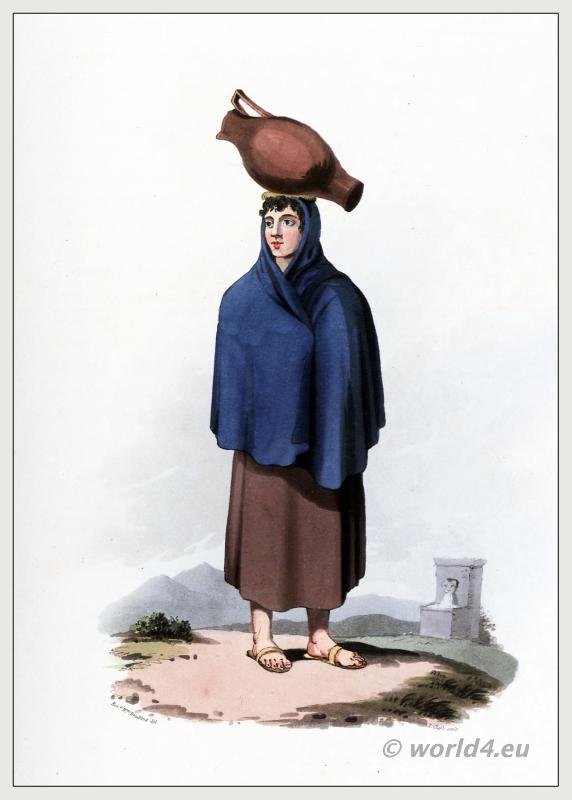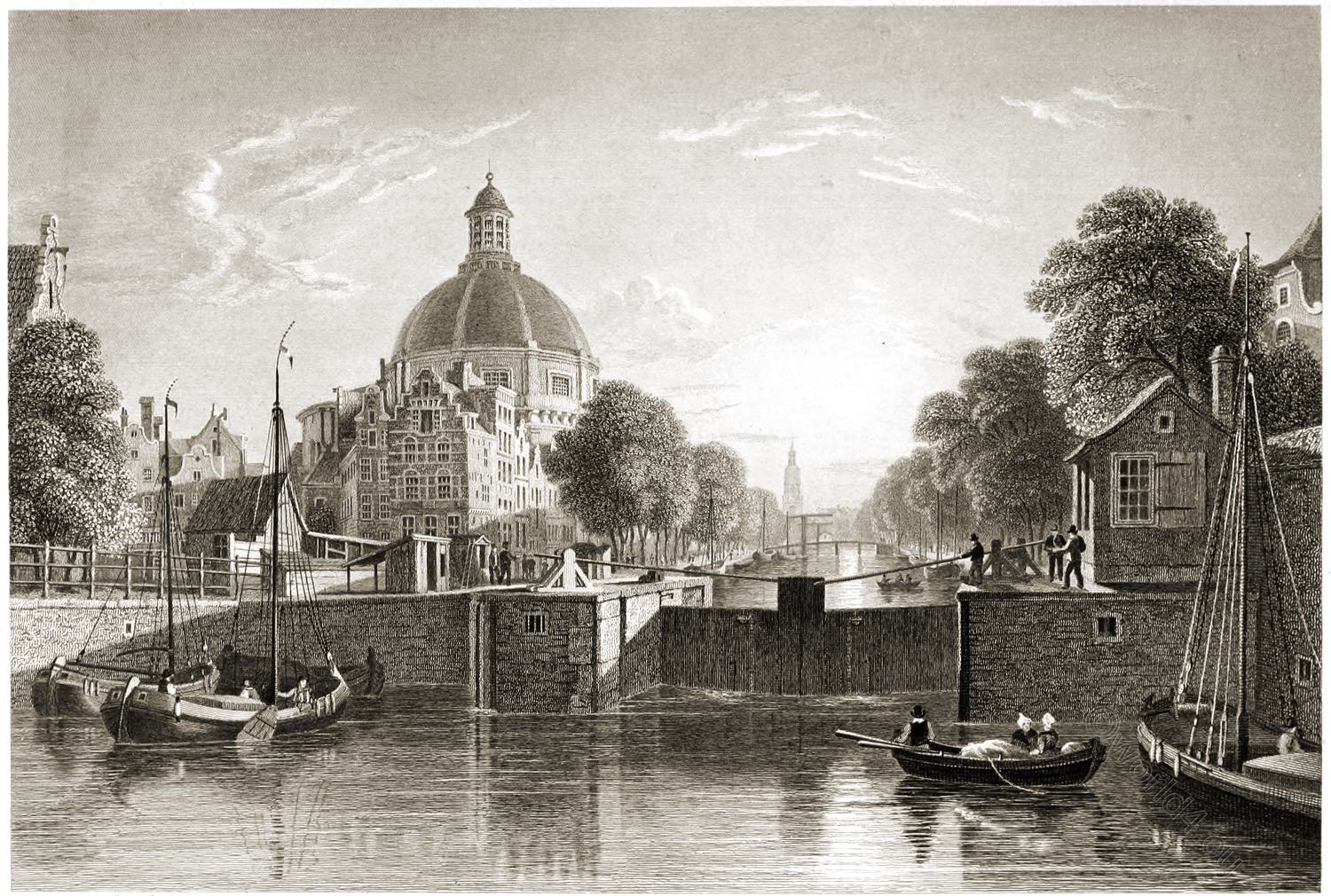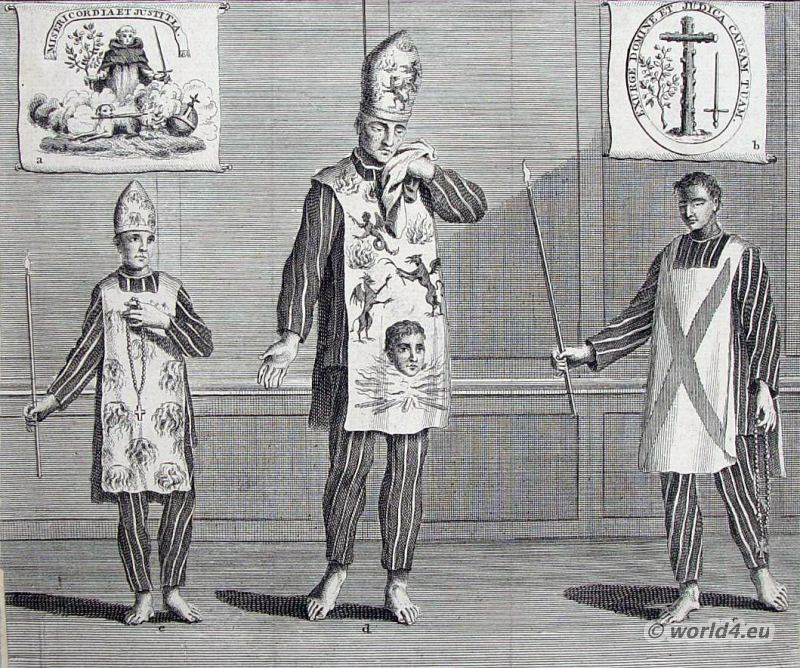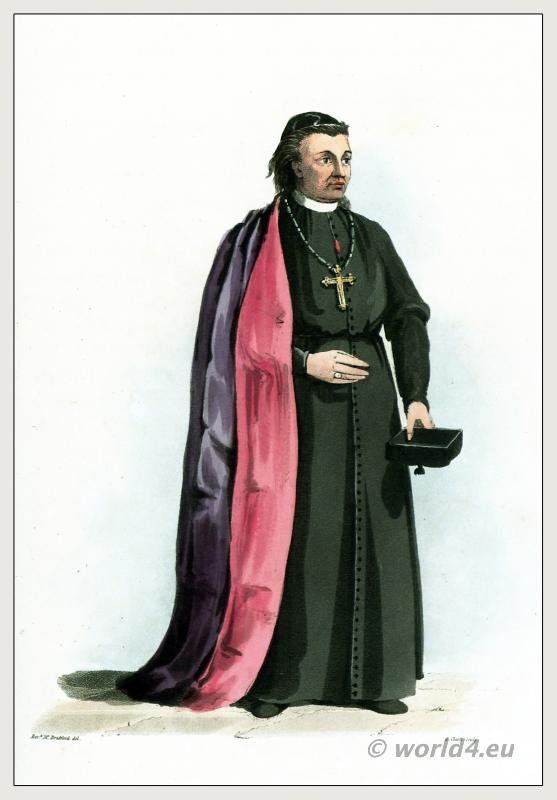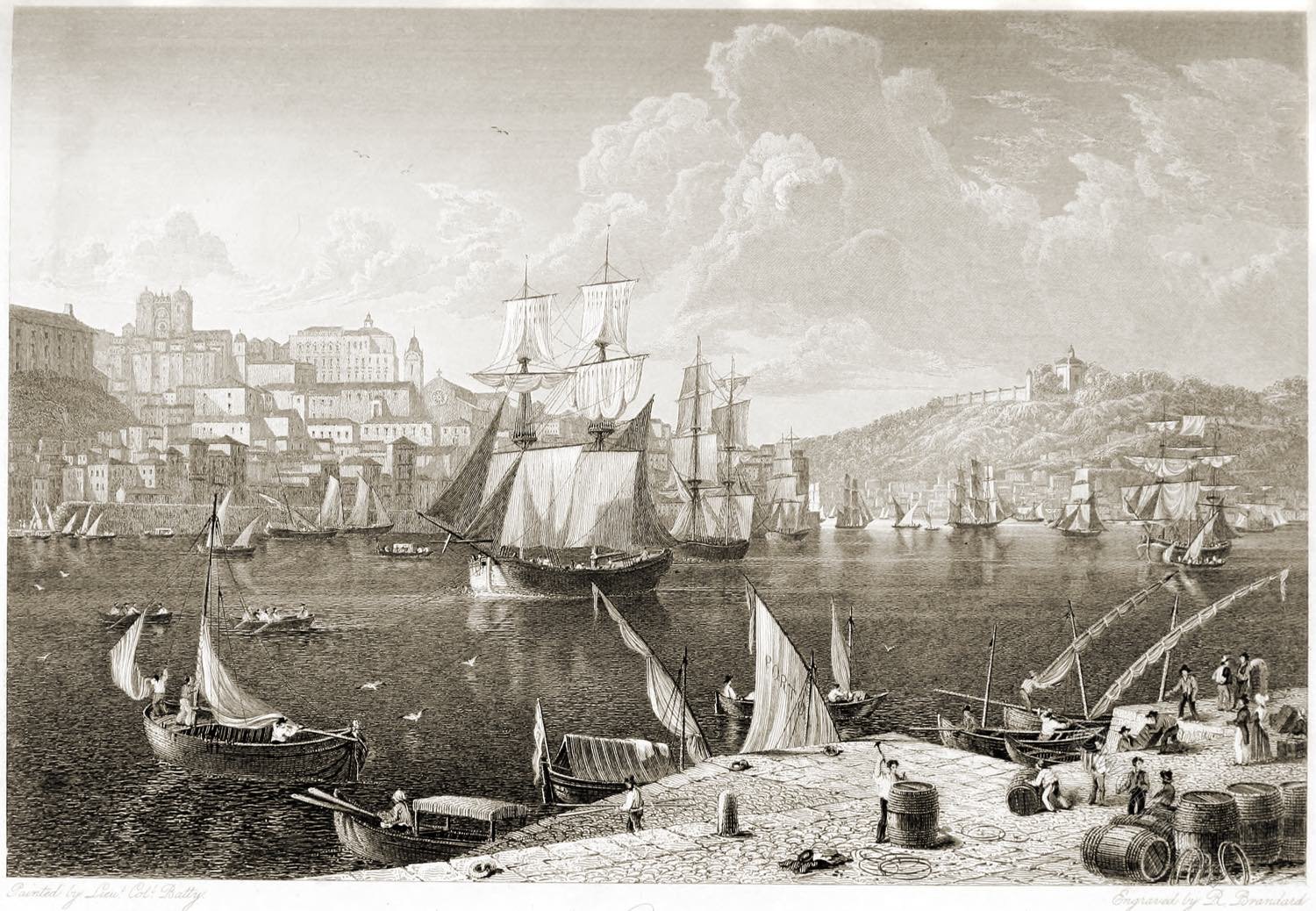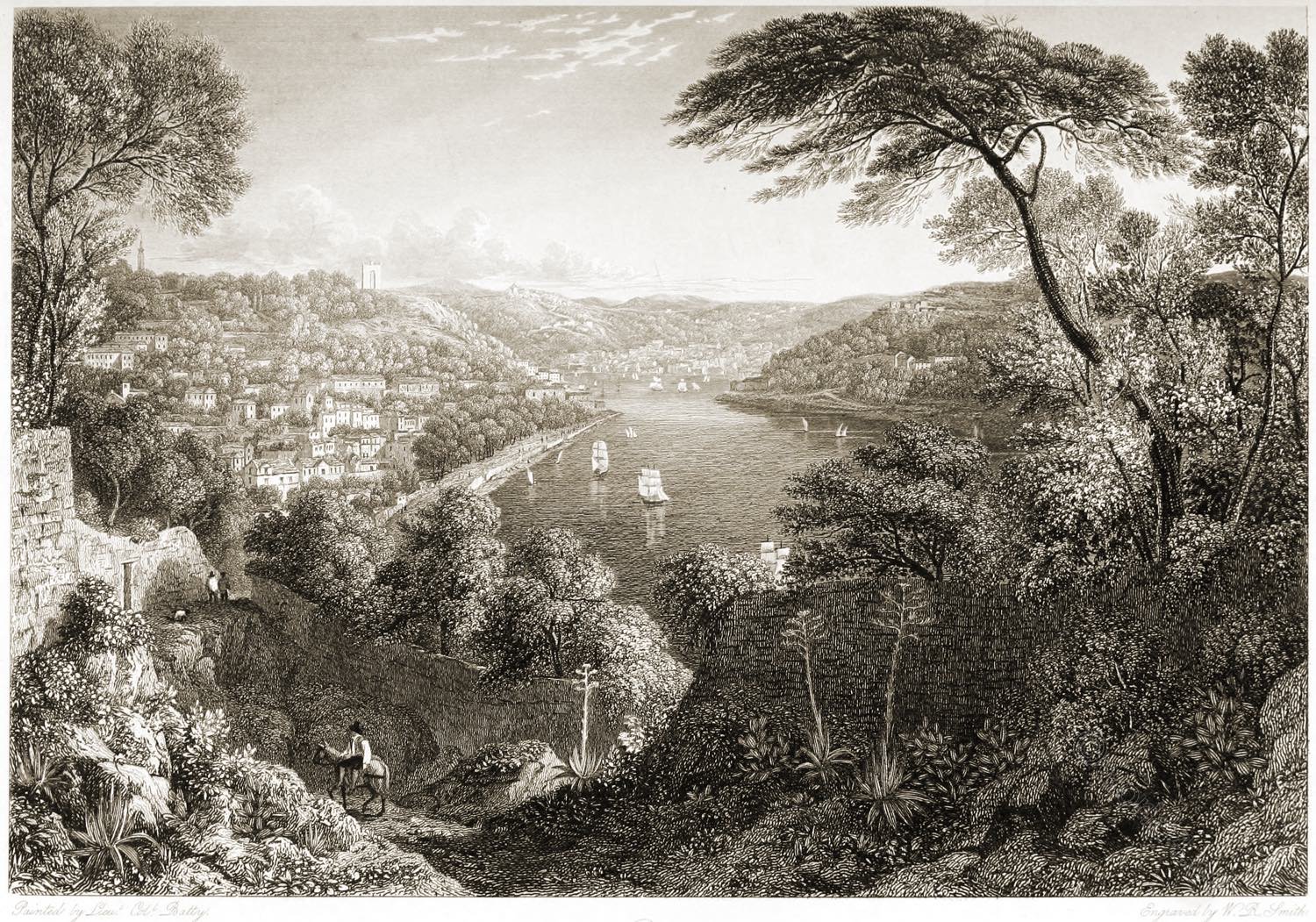
OPORTO. FROM THE MONTE D’ARABIDA.
Having in the preceding description indicated the position of the Monte d’Arabida, we may now exhibit a view of the city of Oporto as seen from this height. The spectator is here supposed to be looking directly up the majestic and beautifully winding Douro. Immediately below, on the left, is the charming valley of Massarellos, bordered on the bank of the river by a fine avenue of trees.
On the crest of the height beyond is a remarkable arch, built of stone, and erected as a mark for vessels to steer upon in crossing the bar at the mouth of the river. It is called the Torre de Marca. From the changes, however, which have taken place in the form of the bar, owing to repeated storms and the accumulation of sand, this land-mark has now become but an insecure guide.
To the left of the Torre da Marca, the lofty tower called the Torre dos Clerigos, situated on one of the highest points in the city, makes its appearance.
Turning to the opposite, or southern side of the river, that part of Oporto called Villa Nova, or Villa Nova de Gaya, is seen, built upon the steep and crescent-shaped hills directly fronting the city. The circular building crowning the eminence in the distance, is the Serra Convent, which bounds Villa Nova on its eastern side.
Close to the foot of the wooded height upon the right, and nearer to the spectator, is the delightfully situated convent of St, Antonio, which may be said to form the western boundary of Villa Nova, The appearance of the Douro, with its numerous shipping, and the variety of interesting objects scattered on its cheerful banks, render this one of the most pleasing scenes in the circle of Oporto.
Source: Select views of some of the principal cities of Europe by Robert Batty. London: Moon, Boys, and Graves, 1832.
Continuing
OPORTO.
The Mouth of the Douro from Massarellos.
Oporto, from the Monte D’Arabida.
Oporto, from the Quay of Villa Nova.
Oporto, from the Custom-House Quay.
Discover more from World4 Costume Culture History
Subscribe to get the latest posts sent to your email.

